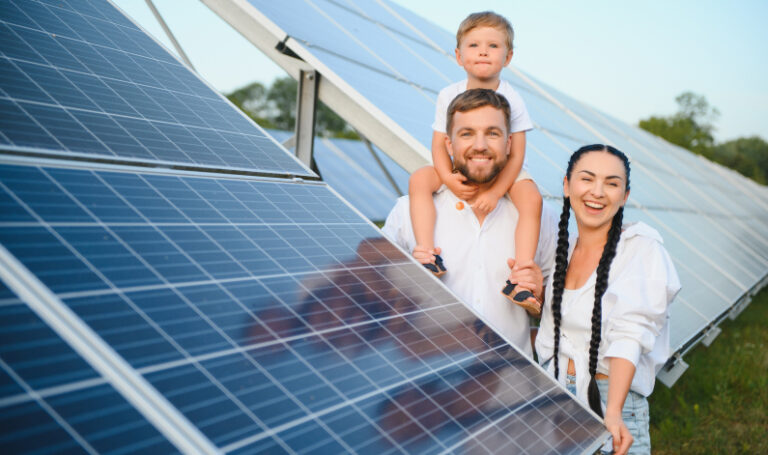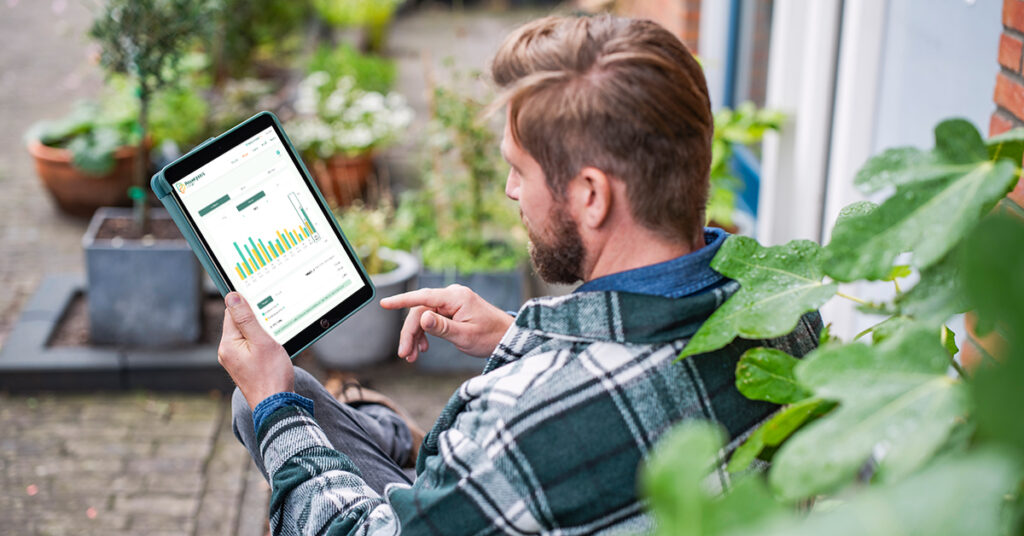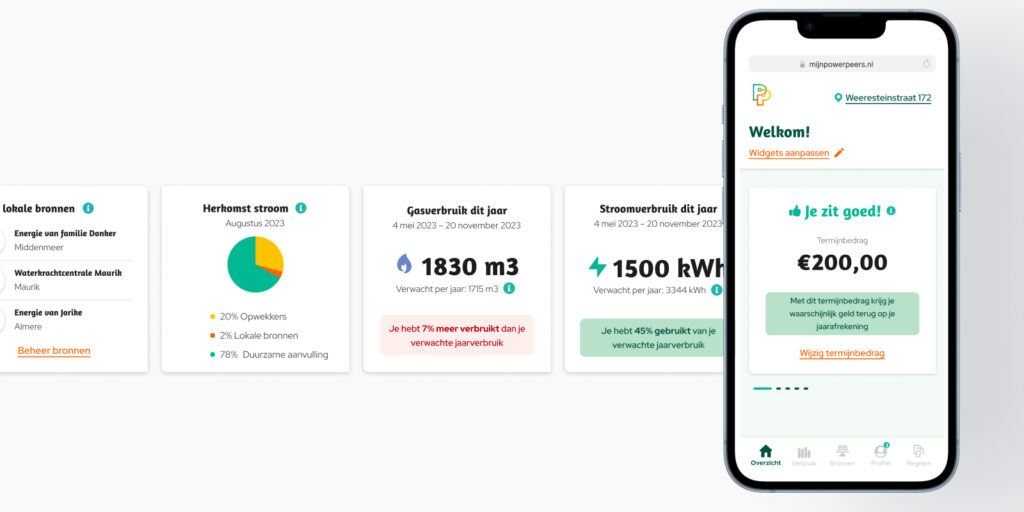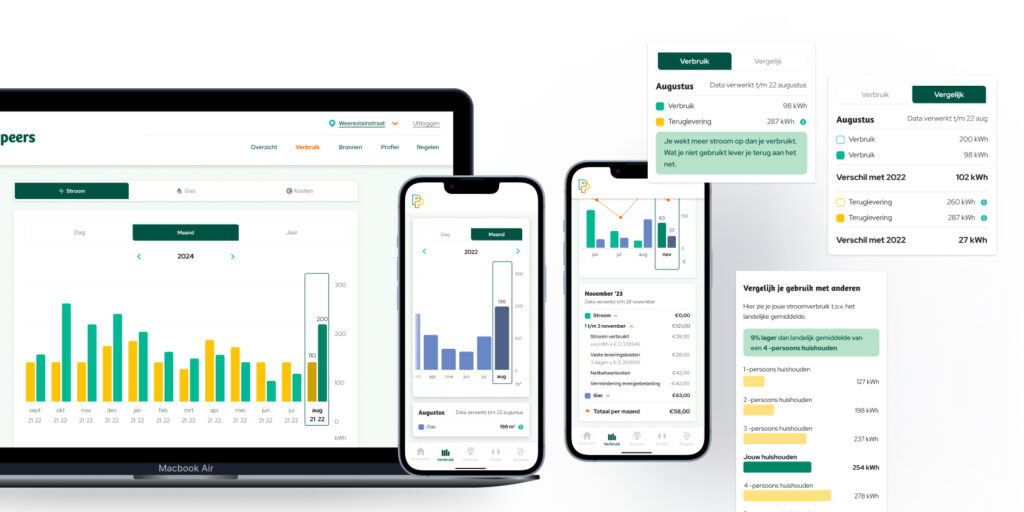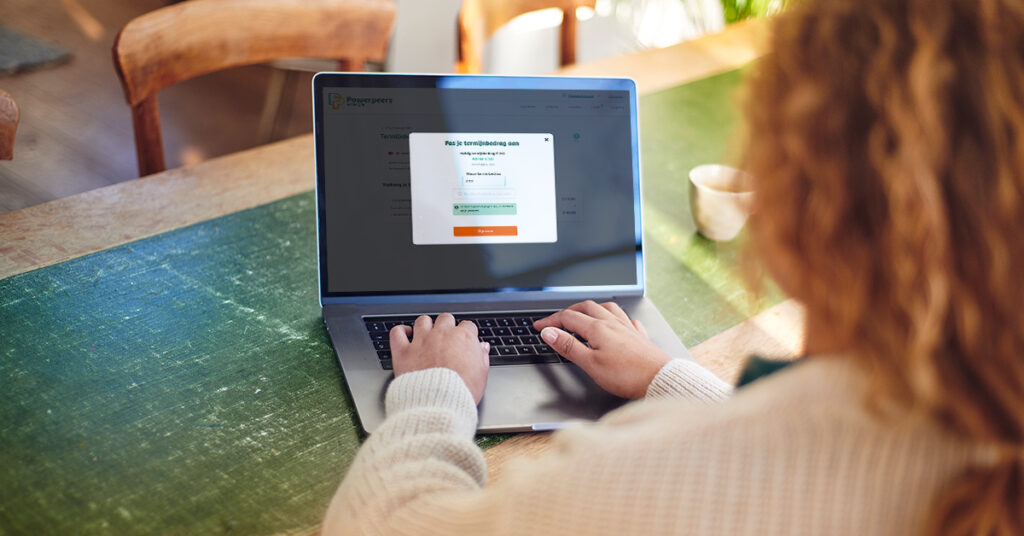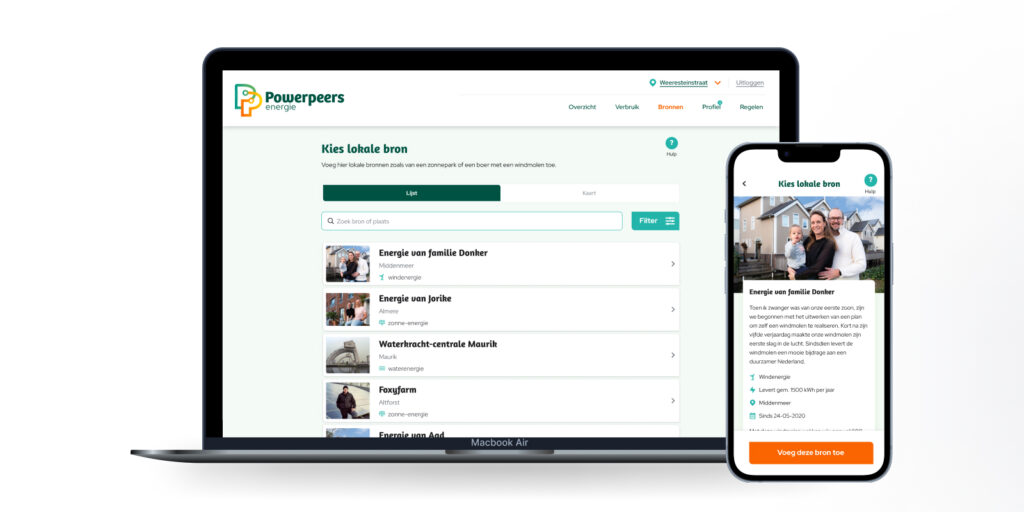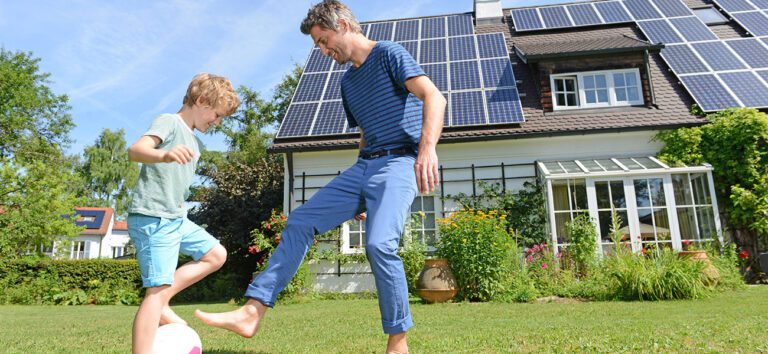The challenge
Sustainability, as well as the affordability of energy, is very important to customers. They also want information about the source of their energy. Powerpeers addresses this by providing customers with an online energy dashboard that offers insight into various aspects of energy consumption and costs. This helps customers make more conscious and sustainable choices. The old dashboard used outdated technology and was difficult for Powerpeers to maintain in terms of content.
Therefore, the decision was made to develop a new dashboard, in collaboration with Bikkelhart (functional design) and CodeCast (APIs). SowiesoDigital was tasked with developing and managing the new dashboard, utilizing the Powerpeers brand identity created by SowiesoHelder.
The result
SowiesoDigital handled the design and development of the new energy dashboard. The new dashboard transforms complex data on energy consumption into understandable and action-oriented information. It provides insights into usage and associated costs, and offers predictions for future consumption. Customers can quickly see how much energy they use annually, monthly, or daily, and how this compares to previous periods. A new feature also allows customers to view the payment status of each invoice.
The main additions are:
In the new energy dashboard, customers now receive advice on their monthly payment amount. This feature indicates whether the payment still aligns with the customer’s energy consumption. It gives them more control over costs and helps prevent any surprises on their annual statement.
- Better insight into usage and costs
Customers can now view their energy costs not only per year and month but also per day. Additionally, they can easily compare their current usage with the same month from the previous year.
Customers can choose which information is displayed on the overview page. They can easily configure this by adding widgets and dragging them to their preferred location.
A unique feature of the Powerpeers dashboard is that users can select local sources (such as a farmer’s windmill or a large solar park) from which they wish to receive energy. This mix is then supplemented with purchased green electricity.
